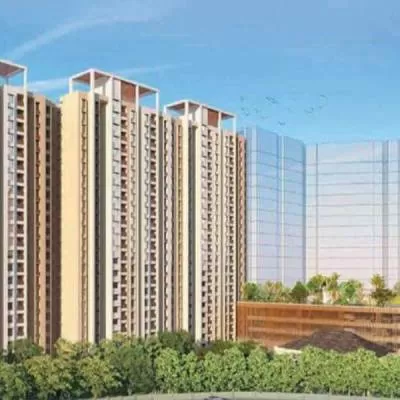- Home
- Real Estate
- What’s Cooking?
What’s Cooking?
In the 35th in a series of clip-and-keep practical construction tips, Engineer Jagvir Goyal discusses aspects of installing a kitchen.
1.The kitchen is perhaps the smallest but most important area of the house. It accommodates a variety of components like a cooking range, electric chimney, sink, refrigerator, storage cabinets, trolleys, microwave and even an optional breakfast counter with two or four chairs. Moreover, it has to be kept scrupulously clean, free of insects and fully workable. These aspects should be considered at the planning stage itself. Plan the three most important things — the worktop, refrigerator and sink — in such a manner that they make a triangle with none of three sides less than 5 ft and more than 8 ft. Further, a door should not lie on any of the three sides. Just draw the sketch of your kitchen and mark this triangle. Very soon, you will be able to construct it. This will lay the most convenient set-up to work in the kitchen.
2.Choose marble or anti-skid tile flooring and matching skirting for the kitchen. Choose a granite worktop rather than the synthetic counters being publicised these days. Provide a 2-ft-high glazed tile dado above the worktop. Keep the width of worktop at a minimum of 24 inches. Use cockroach traps in floor traps to keep the kitchen clean and free of them.
3.If you have a narrow space, choose a straight line design. Here, the refrigerator will be followed by the sink with a window above it and then the hob or burner with storage cabinets above. All three items will be in a straight line. If you have a little wider area, choose a gallery design with the refrigerator and worktop along one wall and sink and hob on the opposite wall. If you have a large area, choose a U-shaped design with the refrigerator along one wall, the hob and the cabinets above along the second wall, and the sink and window along the third wall. Otherwise, an L-shaped design is suitable for all kitchens, most popular in India and very convenient. Here, you have the refrigerator followed by a vacant countertop with storage cabinets above, while the hob and the sink are provided along the adjacent wall.
4.Today, modular kitchens are popular keeping in view their utility. Here, the entire area of the kitchen is divided into modules and planned. Cost is the only factor that drives people away from modular kitchens sometimes. Don’t allow that to happen - it is a good lifetime investment. The modular kitchen designer measures the size of your kitchen and leaves it to the computer to optimally fit all the appliances in that space. A modular kitchen can be installed in a very short time, as less as 72 hours.
5.Readymade kitchens from top modular kitchen providers like Hacker, Alno, Poggenpohl (all German), Arrital Cucine, Europlak, Veneta Cucine, Copat Cucine (all Italian), and Lispo, Sleek and Ultrafresh (all Indian), can be bought by paying hefty sums and leaving the job to them. Most provide 100-per-cent imported and screw-less modules that are easy to assemble or dismantle. The next category is local modular kitchen providers. Earlier, they were expensive but tough competition has optimised costs. The last and cheapest option is to hire your own carpenter. Here, we generally don’t take into account the time and effort involved in arranging the long lists of materials like board, ply, nails, screws and glues demanded by the carpenter. And even after that, a perfect finish is still doubtful. Another important factor is after-sales service. While a carpenter will square up his accounts and leave, a modular kitchen provider will give you service for some years and, by that time, you will get tuned to your kitchen. Therefore, the best option is to check the kitchens built by local modular kitchen makers and choose one. While doing that, always ask them to show you a kitchen actually built by them in a house and you will get an idea of their workmanship.
6.In the kitchen, keep the height of worktop as 32 inch, best for the average height of Indian ladies and to avoid back problems. Keep the bottom of cabinets above the worktop as 56 inch from the floor or 24 inch above the worktop to provide easy access. Keep the depth of cabinets above the worktop as not more than 12 inch as it is not possible to reach inside a deeper cabinet. Moreover, deeper cabinets protrude too much and may result in users striking their head.
7.Use phenol-bonded waterproof plywood for kitchen cabinets. Block-board is often used but it swells up by gaining moisture. The best option is to use powder-coated aluminium framework and wooden laminate panels in shutters. Laminate both faces to eliminate the dangers of termite attack, stains, chemicals, spills and moisture. Moreover, an abundant choice of colour is available in laminates. If you choose natural wood surface laminates, get them polished with melamine. Avoid use of enamel paint on cabinets as patches tend to come off after coming in contact with water.
8.There is an increased trend to use stainless steel sinks in the kitchen. Look for AISI 304 standard stainless steel. Ensure that the thickness is not less than 1.5 mm. Most stainless steel sinks available in the market are only 8 to 9 inch deep, which is insufficient for Indian kitchens keeping in view the utensils we use. Always look for deeper sinks. The attention of major firms like Hindware, Franke, Blanco, Nirali, Neelkanth and Jayna has been drawn towards this important aspect and a modification is expected. Look for seamless sinks that are free from cavities, rust and dirt. A gloss or matte finish depends on your personal choice.
9.While choosing a stainless steel sink, choose a double-bowl single mixer sink. These days, even corner sinks with two bowls at right angles and a central drain board are available. The tap is in the centre and can be turned towards any bowl. Such sinks save a lot of space. Look for a removable vegetable washing bowl. See if the sink is sound-deadened by providing a pad on its underside. Such a sink will not produce noise during the cleaning of utensils. Some sinks come with a lifetime guarantee. Choose these as the companies attend to complaints to ensure their reputation. Also opt for a built-in garbage bin with the sink.
10.A problem with stainless steel sinks is that they sometimes keep looking greasy despite being rubbed clean. Thus, many people in metros are now opting for ceramic sinks. These are mostly available in 24-inch size but now 36 inch is on the way. An interesting feature of ceramic sinks is that they are never completely accurate in size as they are mostly handmade. So keep this aspect in mind while leaving space for a ceramic sink. Sometimes, ceramic sinks do remind people of a hospital as these sinks have traditionally been used in hospitals and labs — this may put some people off. The last option is to get your sink bowls made of marble.
- Construction
- Update
- Portal
- Magazine
- India
- June
- 2010
- World
- clip-and-keep
- tips
- installing
- kitchen
- cooking
- range
- refrigerator
- granite
- worktop
- marble
- flooring
- investment
- Hacker
- Alno
- Poggenpohl
- Germany
- Arrital Cucine
- Europlak
- Veneta Cucine
- Copat Cucine
- Sleek
- Ultrafresh
- waterproof
- plywood
- Laminate
- enamel
- paint
- Hindware
- Franke
- Bla
In the 35th in a series of clip-and-keep practical construction tips, Engineer Jagvir Goyal discusses aspects of installing a kitchen. 1.The kitchen is perhaps the smallest but most important area of the house. It accommodates a variety of components like a cooking range, electric chimney, sink, refrigerator, storage cabinets, trolleys, microwave and even an optional breakfast counter with two or four chairs. Moreover, it has to be kept scrupulously clean, free of insects and fully workable. These aspects should be considered at the planning stage itself. Plan the three most important things — the worktop, refrigerator and sink — in such a manner that they make a triangle with none of three sides less than 5 ft and more than 8 ft. Further, a door should not lie on any of the three sides. Just draw the sketch of your kitchen and mark this triangle. Very soon, you will be able to construct it. This will lay the most convenient set-up to work in the kitchen. 2.Choose marble or anti-skid tile flooring and matching skirting for the kitchen. Choose a granite worktop rather than the synthetic counters being publicised these days. Provide a 2-ft-high glazed tile dado above the worktop. Keep the width of worktop at a minimum of 24 inches. Use cockroach traps in floor traps to keep the kitchen clean and free of them. 3.If you have a narrow space, choose a straight line design. Here, the refrigerator will be followed by the sink with a window above it and then the hob or burner with storage cabinets above. All three items will be in a straight line. If you have a little wider area, choose a gallery design with the refrigerator and worktop along one wall and sink and hob on the opposite wall. If you have a large area, choose a U-shaped design with the refrigerator along one wall, the hob and the cabinets above along the second wall, and the sink and window along the third wall. Otherwise, an L-shaped design is suitable for all kitchens, most popular in India and very convenient. Here, you have the refrigerator followed by a vacant countertop with storage cabinets above, while the hob and the sink are provided along the adjacent wall. 4.Today, modular kitchens are popular keeping in view their utility. Here, the entire area of the kitchen is divided into modules and planned. Cost is the only factor that drives people away from modular kitchens sometimes. Don’t allow that to happen - it is a good lifetime investment. The modular kitchen designer measures the size of your kitchen and leaves it to the computer to optimally fit all the appliances in that space. A modular kitchen can be installed in a very short time, as less as 72 hours. 5.Readymade kitchens from top modular kitchen providers like Hacker, Alno, Poggenpohl (all German), Arrital Cucine, Europlak, Veneta Cucine, Copat Cucine (all Italian), and Lispo, Sleek and Ultrafresh (all Indian), can be bought by paying hefty sums and leaving the job to them. Most provide 100-per-cent imported and screw-less modules that are easy to assemble or dismantle. The next category is local modular kitchen providers. Earlier, they were expensive but tough competition has optimised costs. The last and cheapest option is to hire your own carpenter. Here, we generally don’t take into account the time and effort involved in arranging the long lists of materials like board, ply, nails, screws and glues demanded by the carpenter. And even after that, a perfect finish is still doubtful. Another important factor is after-sales service. While a carpenter will square up his accounts and leave, a modular kitchen provider will give you service for some years and, by that time, you will get tuned to your kitchen. Therefore, the best option is to check the kitchens built by local modular kitchen makers and choose one. While doing that, always ask them to show you a kitchen actually built by them in a house and you will get an idea of their workmanship. 6.In the kitchen, keep the height of worktop as 32 inch, best for the average height of Indian ladies and to avoid back problems. Keep the bottom of cabinets above the worktop as 56 inch from the floor or 24 inch above the worktop to provide easy access. Keep the depth of cabinets above the worktop as not more than 12 inch as it is not possible to reach inside a deeper cabinet. Moreover, deeper cabinets protrude too much and may result in users striking their head. 7.Use phenol-bonded waterproof plywood for kitchen cabinets. Block-board is often used but it swells up by gaining moisture. The best option is to use powder-coated aluminium framework and wooden laminate panels in shutters. Laminate both faces to eliminate the dangers of termite attack, stains, chemicals, spills and moisture. Moreover, an abundant choice of colour is available in laminates. If you choose natural wood surface laminates, get them polished with melamine. Avoid use of enamel paint on cabinets as patches tend to come off after coming in contact with water. 8.There is an increased trend to use stainless steel sinks in the kitchen. Look for AISI 304 standard stainless steel. Ensure that the thickness is not less than 1.5 mm. Most stainless steel sinks available in the market are only 8 to 9 inch deep, which is insufficient for Indian kitchens keeping in view the utensils we use. Always look for deeper sinks. The attention of major firms like Hindware, Franke, Blanco, Nirali, Neelkanth and Jayna has been drawn towards this important aspect and a modification is expected. Look for seamless sinks that are free from cavities, rust and dirt. A gloss or matte finish depends on your personal choice. 9.While choosing a stainless steel sink, choose a double-bowl single mixer sink. These days, even corner sinks with two bowls at right angles and a central drain board are available. The tap is in the centre and can be turned towards any bowl. Such sinks save a lot of space. Look for a removable vegetable washing bowl. See if the sink is sound-deadened by providing a pad on its underside. Such a sink will not produce noise during the cleaning of utensils. Some sinks come with a lifetime guarantee. Choose these as the companies attend to complaints to ensure their reputation. Also opt for a built-in garbage bin with the sink. 10.A problem with stainless steel sinks is that they sometimes keep looking greasy despite being rubbed clean. Thus, many people in metros are now opting for ceramic sinks. These are mostly available in 24-inch size but now 36 inch is on the way. An interesting feature of ceramic sinks is that they are never completely accurate in size as they are mostly handmade. So keep this aspect in mind while leaving space for a ceramic sink. Sometimes, ceramic sinks do remind people of a hospital as these sinks have traditionally been used in hospitals and labs — this may put some people off. The last option is to get your sink bowls made of marble.























